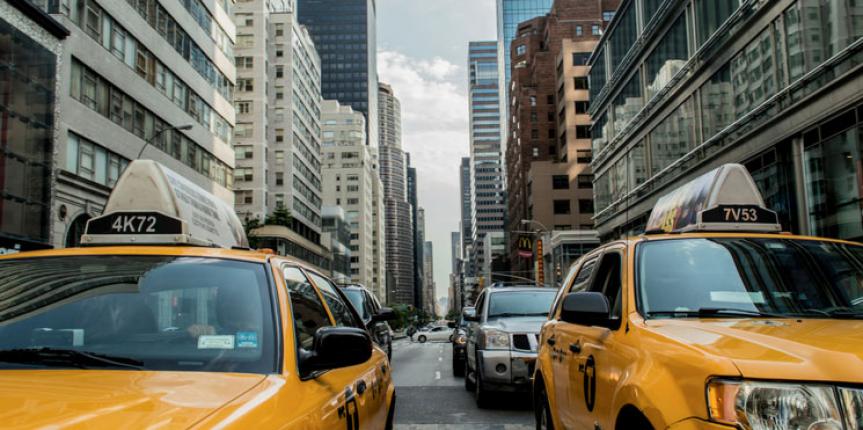Uber and Taxi Accidents: What to Do If Injured As a Passenger in Arizona
Uber and other ridesharing services have transformed the way we think about transportation. These programs provide alternative options for getting from place to place in areas poorly served by public transit. Preliminary statistics indicate that they cut down significantly on intoxicated driving; researchers at Western California University have linked ridesharing with a significant fall in DUI charges and fatalities in 150 cities, including Phoenix, Flagstaff and Tucson.
Clearly, ridesharing offers a net gain in terms of safety. But that doesn't mean that hiring an Uber driver or hailing a cab is always the safer option. Passengers place a great deal of trust in their drivers, but unfortunately, drivers don't always deliver. Many demonstrate clear negligence behind the wheel, behaving in risky behaviors such as speeding, running stop signs or even texting while driving. These behaviors put them, their passengers and other motorists at considerable risk.
Even self-driving ridesharing services can be dangerous. In March, 2017, a self-driving Uber Volvo XC90 SUV was involved in a high-speed crash in Tempe. Nobody was injured, but the accident offered a clear reminder of the imperfect nature of self-driving technology, and the need for passengers to make informed decisions. Uber briefly suspended its self-driving pilot program in the aftermath of this accident, but experts predict that self-driving services — and related accidents — are in our future.
Detailed accident and fatality statistics are unfortunately lacking, both for ridesharing services and traditional taxi companies. Both Uber and Lyrft claim to keep detailed records about driver and passenger safety, but they also decline to share this vital information. However, a report from the Cato Institute indicates that Uber and Lyft passengers are at no greater risk than those who opt for taxi rides.
Liability Coverage In Arizona
Liability policies — and their enforcement — vary drastically from one ridesharing service to the next. In Arizona, taxis must possess insurance coverage of $300,000 or greater, depending on vehicle capacity and the number of passengers carried. Taxi insurance must cover personal liability and property damage. Additionally, uninsured and underinsured motorist coverage must be provided.
In many cases, coverage provided through Uber and Lyft can exceed that offered by traditional taxi companies. Both Uber and Lyft provide up to $1 million in coverage whenever passengers are in ridesharing cars. After hitting the $1 million mark, things get a little more complicated. Unfortunately, while drivers have the ability to purchase additional coverage, most don't; a notable SherpaShare study involving over 1,000 Uber and Lyft drivers found that 77 percent failed to obtain any insurance beyond what the companies offered in the first place. Only 24 percent of those with extra insurance had commercial rideshare policies (the most complete and advisable form of coverage) at the time of the study. Thus, in many cases, it's up to the rider to pursue personal injury damages, particularly if an accident exceeds $1 million.
Thankfully, ridesharing is regulated in Arizona, which passed a landmark bill in 2015. The legislation requires all drivers to obtain background checks and carry liability insurance. Although Uber and Lyft already offer liability coverage, Arizona's regulations cover outside services that otherwise might fall through the cracks. Additionally, the 2015 law mandates vehicle inspections and includes a no tolerance policy for driver intoxication. All this can help passengers hold drivers accountable in the event of an accident.
What to Do if Involved in an Uber Accident
Thorough documentation is essential in the immediate aftermath of a taxi or Uber accident. If possible, take several pictures of the scene of the accident. Also note the time of the crash and the names of all those involved. Every piece of evidence is vital as you determine whether negligence played a role in in the incident, especially as your driver or other parties involved in the incident may quickly change their tune after speaking with insurance providers.
Obtain medical attention as soon as possible; the more thorough your injury documentation, the better. Be aware of Arizona's statute of limitations, and, once you've been cleared by a medical professional, contact a trusted personal injury attorney. If a representative from the ridesharing company responsible for the accident attempts to contact you, do not agree to speak until you have a legal representative in your corner. Your lawyer can help you deal with insurance adjusters and determine whether negligence played a sufficient enough role in the accident to warrant personal injury proceedings.
Although significant risks come attached to any ride with Uber, Lyft or a traditional taxi, the consensus thus far among researchers is that these services provide a net gain in safety, particularly if you would otherwise operate a vehicle while under the influence. That being said, it's important to prepare yourself for the worst case scenario. A thorough understanding of Uber's policies and typical protocol in the aftermath of an accident can save you a lot of grief down the road, and help you secure the damages you deserve should negligence come into play.






